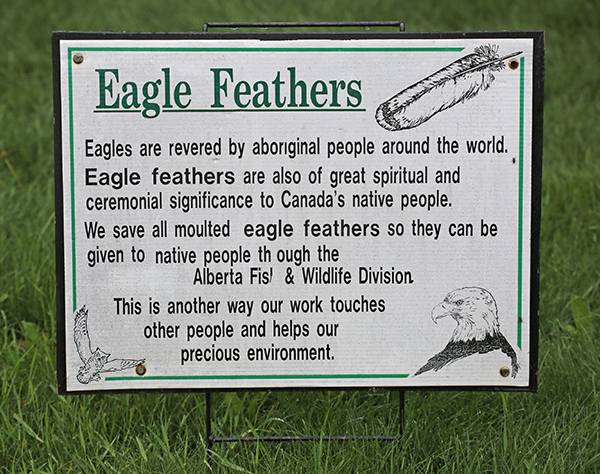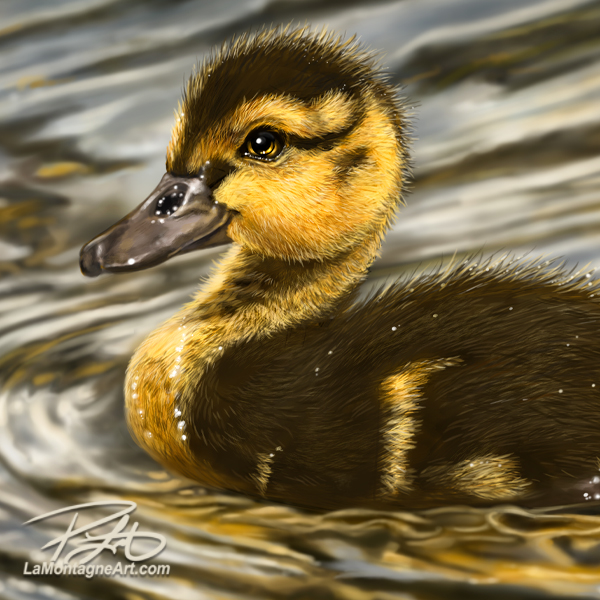
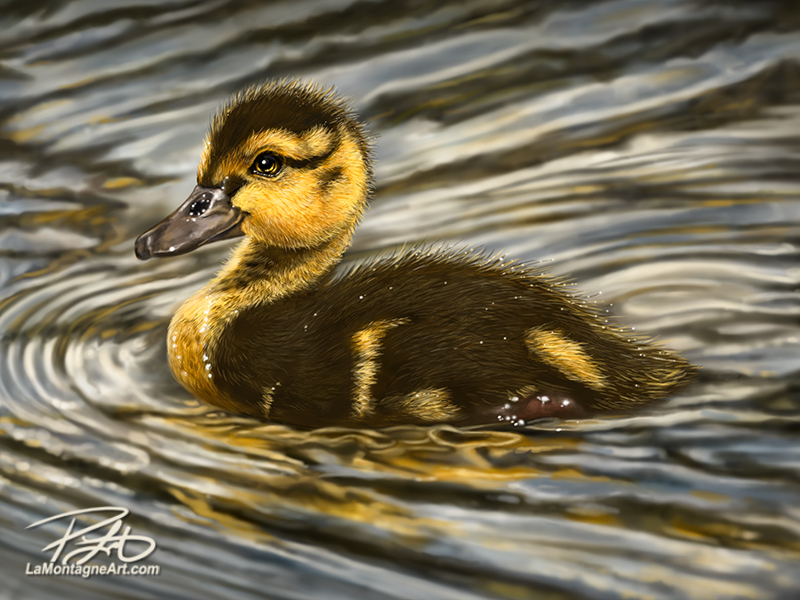 Here’s a little duckling I finished painting this morning. The duckling itself wasn’t difficult, but the water certainly was. Ironic that I began this year with a commission piece where water was also the hardest part of that painting. There will always be room for improvement in any artistic pursuit, so I welcome these unexpected challenges. The work might become boring without them.
Here’s a little duckling I finished painting this morning. The duckling itself wasn’t difficult, but the water certainly was. Ironic that I began this year with a commission piece where water was also the hardest part of that painting. There will always be room for improvement in any artistic pursuit, so I welcome these unexpected challenges. The work might become boring without them.
When I first began creating digital art more than 20 years ago, there was a common misconception that if you used a computer, then the computer was doing all the work. Press a few buttons, apply a filter or two and anybody can do it. There was also a ‘look’ to a lot of digital art. It was far too smooth, with a blurry airbrushed look, and it all looked the same. Plenty of amateur artists still make this mistake when they get started. After hearing more than enough of this (anything but constructive) criticism, I worked hard to make my work look more like traditional acrylic or oil textures. That effort paid off because I developed a textured brush style evident in all of my work today. People are still surprised to find out my medium of choice and will often say that it doesn’t look digital.
For the water in this painting, however, I had to go backwards, and paint with that smooth, airbrushed look I have deliberately avoided for so many years. Texture in the water would not only have looked wrong, it would have distracted from the subject of the piece. It’s the contrast between the detailed hair-like feathers of our little friend and the water in which he’s swimming that makes the duck stand out.
This is the final cropped composition for this painting, but I painted more water than you see here. As most of my paintings end up on licensed products, I painted more of the background to allow for different Pacific Music and Art templates. On some of my older pieces, I’ve had to repaint entire sections to accommodate items like coffee mugs and different-sized aluminum prints.
These days, I keep that in mind while painting a piece. It means more work that most people won’t see but less of a headache when I format the painting for more than a dozen different items in their catalogue. Art (and artists) must be flexible when the work is destined for commercial products.
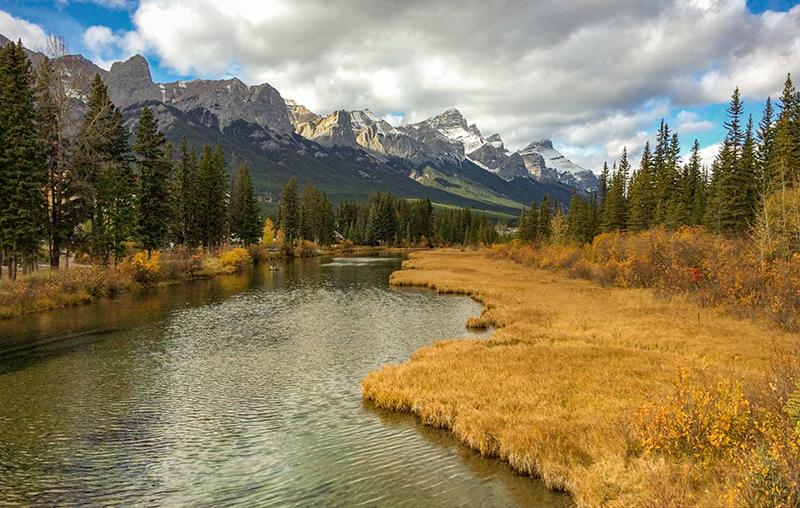 I took the reference for this painting four years ago from the boardwalk that winds through the Policeman’s Creek wetlands here in Canmore. Easily accessible for people of all fitness levels, it’s located in the middle of town and might as well be an urban park. It’s a pretty walk, a nice shortcut from where we live to downtown Canmore, and preferable to walking on the sidewalk of a busy street.
I took the reference for this painting four years ago from the boardwalk that winds through the Policeman’s Creek wetlands here in Canmore. Easily accessible for people of all fitness levels, it’s located in the middle of town and might as well be an urban park. It’s a pretty walk, a nice shortcut from where we live to downtown Canmore, and preferable to walking on the sidewalk of a busy street.
You might think I’d be happier taking photos of bears, wolves, eagles or other more exciting animals, but I’m just as content to spend an hour chasing around a family of ducks with my camera. You never know what critter might end up in a painting.
Only a couple of days ago, I realized just how few paintings I’ve completed this year. I painted the commission of Santé in February and finished my elephant painting in March. In addition, I’ve painted a couple of burrowing owls that are part of a larger piece, but this duckling is only the third finished painting, and the year is almost half over.
Considering I usually produce 10 to 15 pieces each year, I’m well behind where I’d like to be. Of course, one could argue quality vs. quantity, but as this work is a big part of how I make my living, I try to balance them.
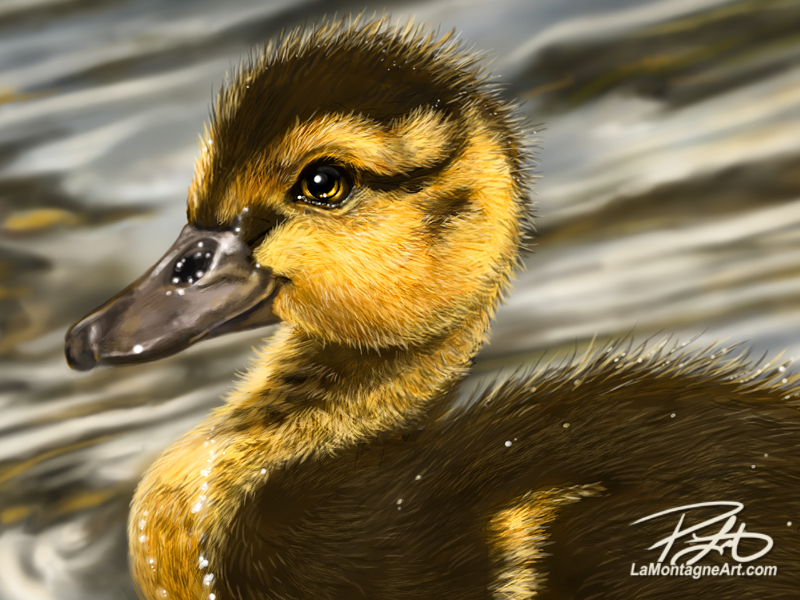 The reason for fewer paintings is no mystery. Despite the dramatic decline in the newspaper industry, it’s still a big chunk of my income, and I’m unable to put off or set aside my daily editorial cartoon deadlines. As a result, those take priority every day and painting time is often sacrificed for the cartoons.
The reason for fewer paintings is no mystery. Despite the dramatic decline in the newspaper industry, it’s still a big chunk of my income, and I’m unable to put off or set aside my daily editorial cartoon deadlines. As a result, those take priority every day and painting time is often sacrificed for the cartoons.
On the animal art side of things, I’ve been more occupied this year creating new products, filling and delivering print orders, planning and attending Expo and more local markets, all things that have been on hold the past couple of years. I’m not complaining that I have more sales and increased opportunities to put more work into the world, but it illustrates that art for a living is an illusion.
I don’t spend as much time creating the work as I do promoting and selling the work.
We all struggle with finding enough time to get it all done, whatever ‘it’ is, and most often fail in the attempt. Unfortunately, knowing the solution is simple doesn’t make it any easier.
Saying ‘No’ a lot more often than ‘Yes’ to requests and demands goes against most of our instincts to be friendly, help people out, and put others’ needs ahead of ours. But when it means sacrificing what is most important to us, whether time with our family, the pursuit of hobbies, recharging and relaxing, or time to paint more funny-looking animals, nobody else will make that time for us.
These paintings are a lot of work, but it’s work that I love a great deal, so it makes sense that I’d want to spend more time doing it. I’ll try to remember that for the second half of this year.
Cheers,
Patrick


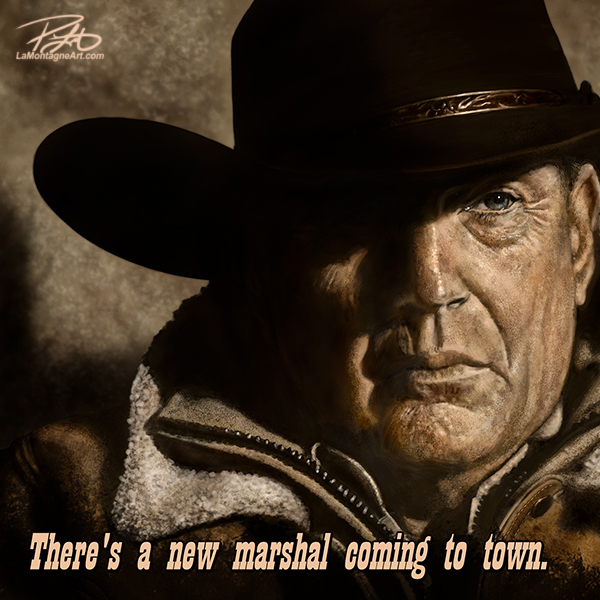
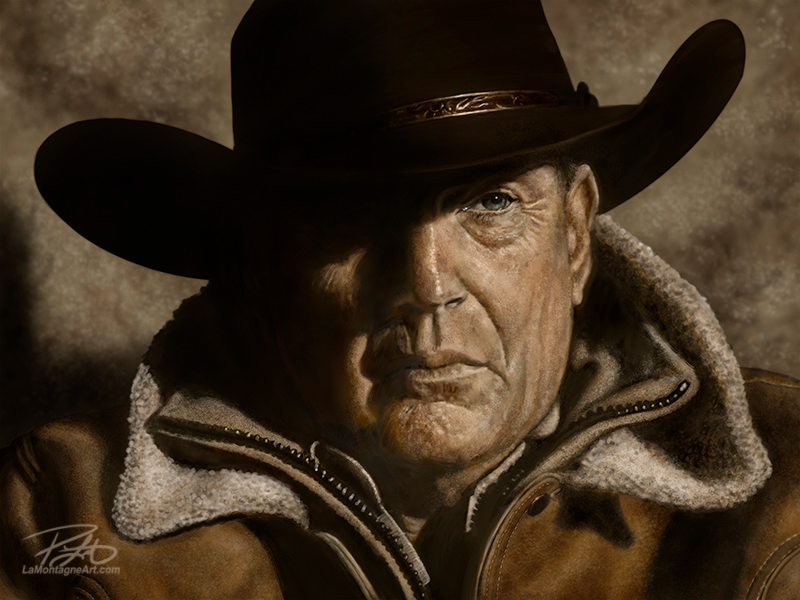
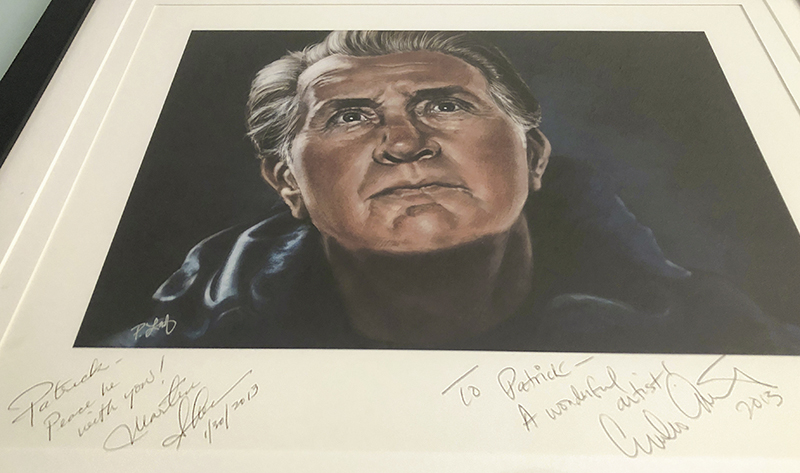 Another was when I painted Canadian astronaut Chris Hadfield while he was in command of the International Space Station. He saw
Another was when I painted Canadian astronaut Chris Hadfield while he was in command of the International Space Station. He saw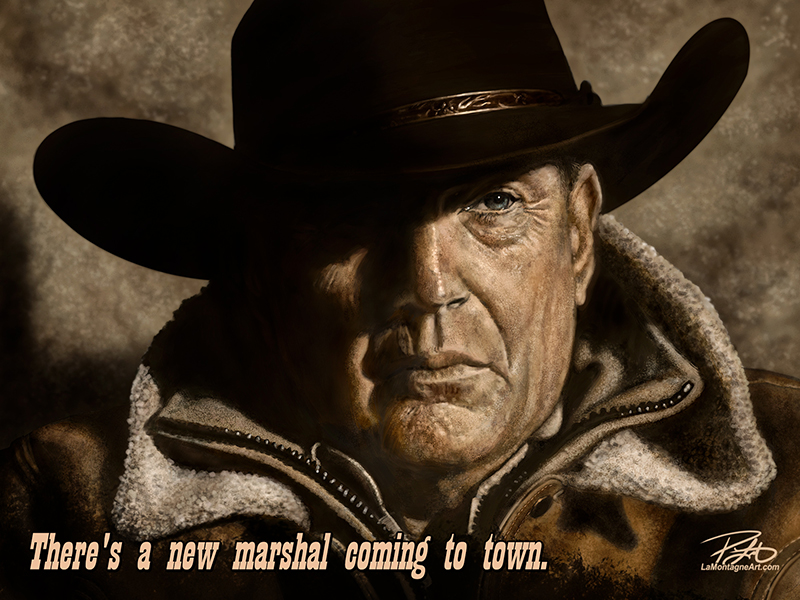 As it also made national news, and Yellowstone is a wildly popular show, I sent it out to my other papers this morning, in case there’s more interest in it. For context outside of Calgary, I added “Calgary Stampede:” before the caption for those other papers.
As it also made national news, and Yellowstone is a wildly popular show, I sent it out to my other papers this morning, in case there’s more interest in it. For context outside of Calgary, I added “Calgary Stampede:” before the caption for those other papers.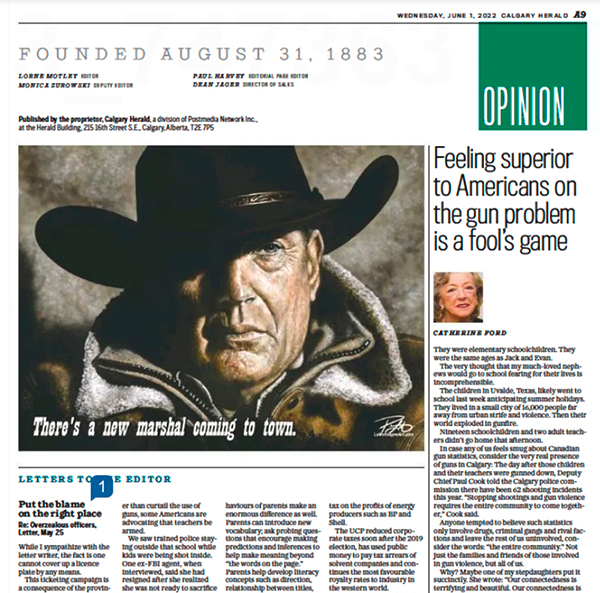 The Costner portrait file is 30” X 40” with a lot of detailed brushwork. To shrink it down and prepare it for newsprint, I had to boost the contrast, oversharpen it, and make other Photoshop adjustments to mitigate a poor result. So while I was happy to see it printed in the Calgary Herald (digital edition above), I couldn’t help but see all the flaws in the reproduction, even though I know that most people won’t notice or care.
The Costner portrait file is 30” X 40” with a lot of detailed brushwork. To shrink it down and prepare it for newsprint, I had to boost the contrast, oversharpen it, and make other Photoshop adjustments to mitigate a poor result. So while I was happy to see it printed in the Calgary Herald (digital edition above), I couldn’t help but see all the flaws in the reproduction, even though I know that most people won’t notice or care.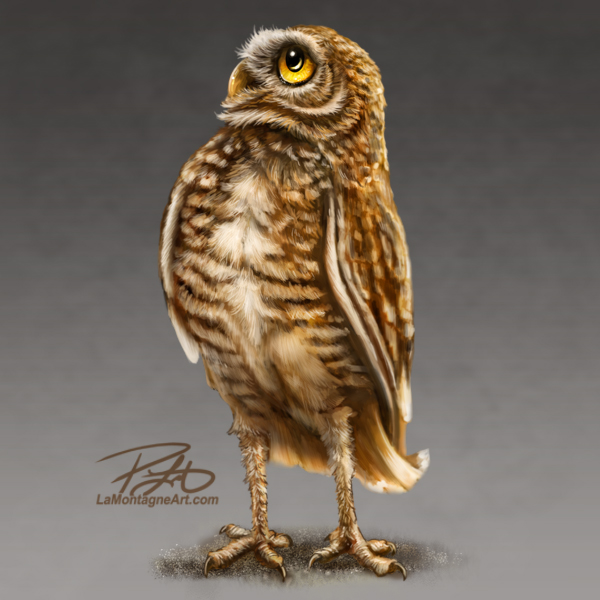
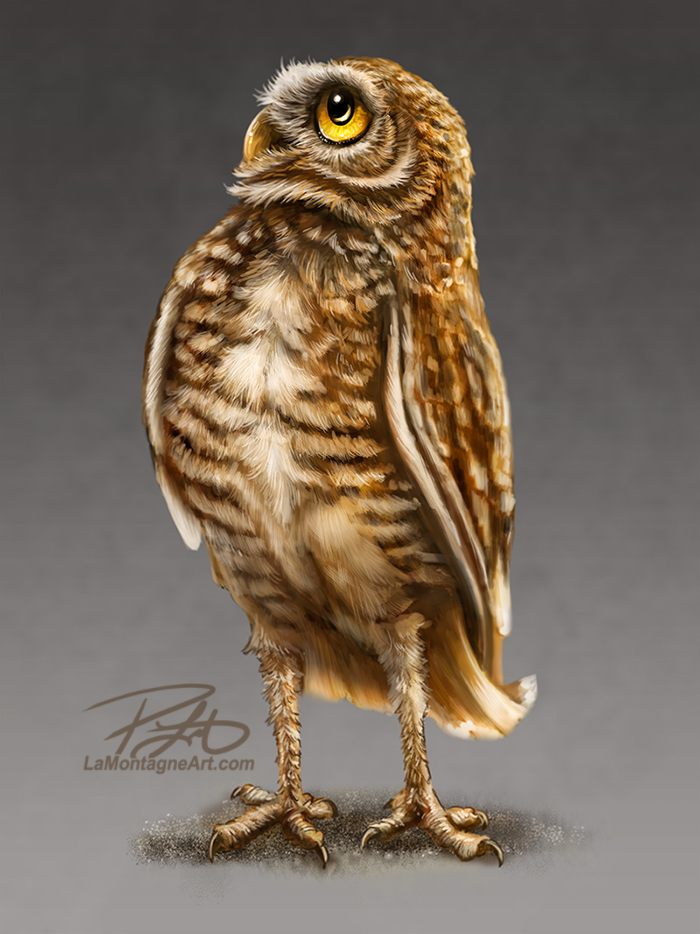 Here’s the fourth burrowing owl in the series, which will be part of a larger piece featuring multiple owls in different poses. I don’t know how many owls yet, and I only have a rough vision of it.
Here’s the fourth burrowing owl in the series, which will be part of a larger piece featuring multiple owls in different poses. I don’t know how many owls yet, and I only have a rough vision of it.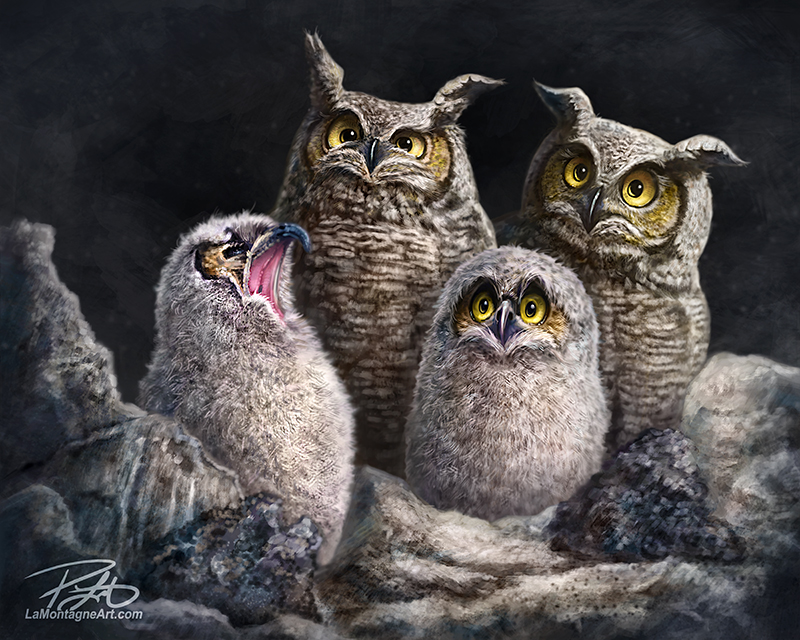
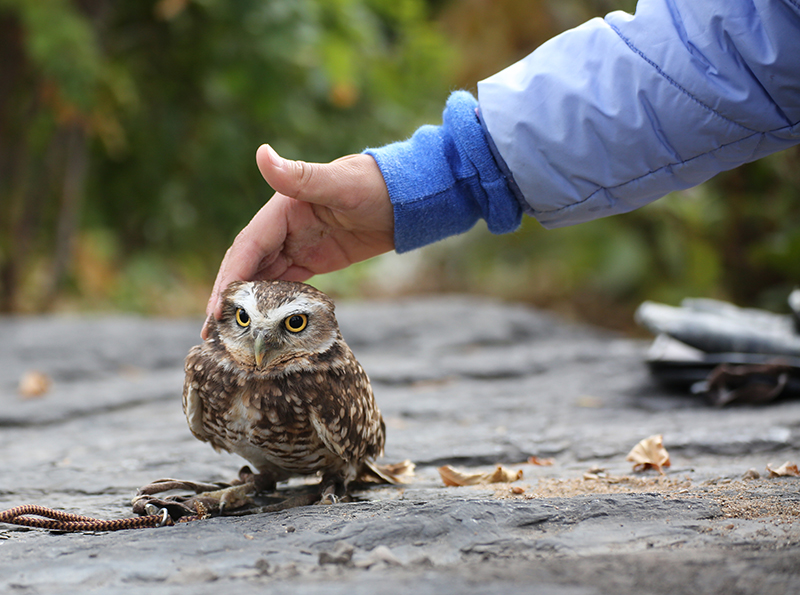

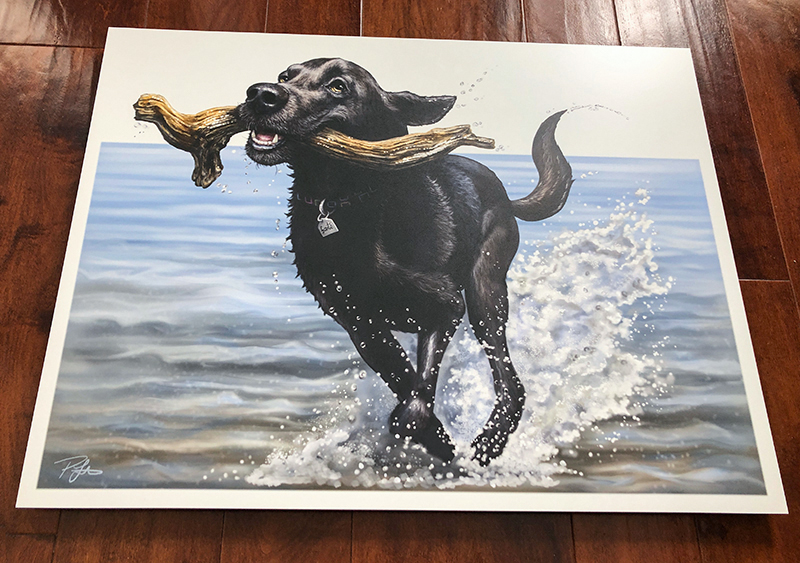 Last month, I finished what could easily be called my favourite
Last month, I finished what could easily be called my favourite 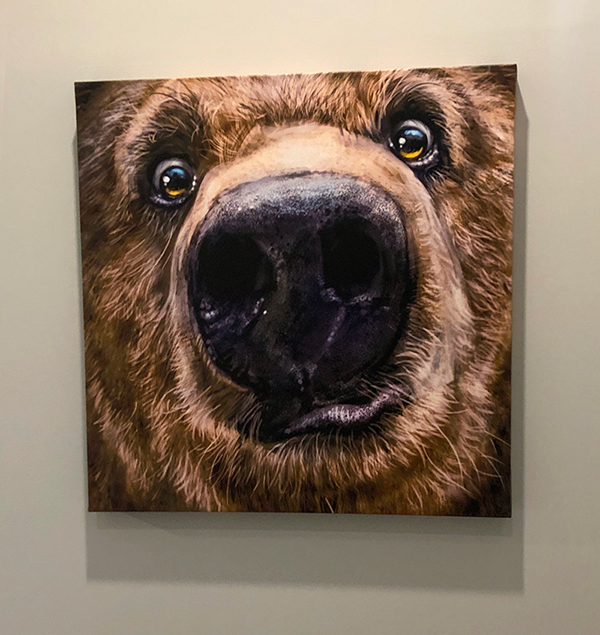 It’s always flattering to see my work in somebody’s home, especially a canvas of one of my personal favourites, my Berkley painting called “Peanuts.”
It’s always flattering to see my work in somebody’s home, especially a canvas of one of my personal favourites, my Berkley painting called “Peanuts.”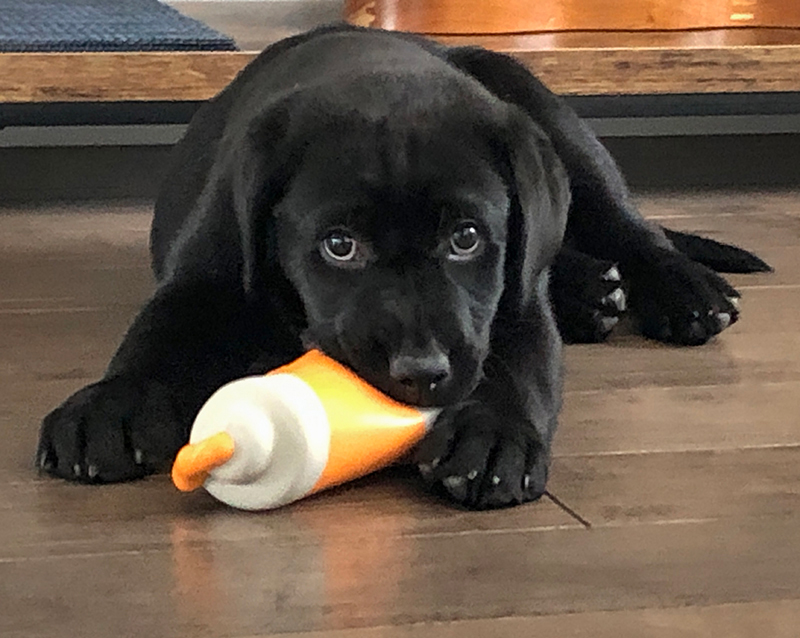 I got to meet Suzanne’s new little wonder, River, a black lab puppy, who is in that lovable, awkward, too small for her big paws stage.
I got to meet Suzanne’s new little wonder, River, a black lab puppy, who is in that lovable, awkward, too small for her big paws stage.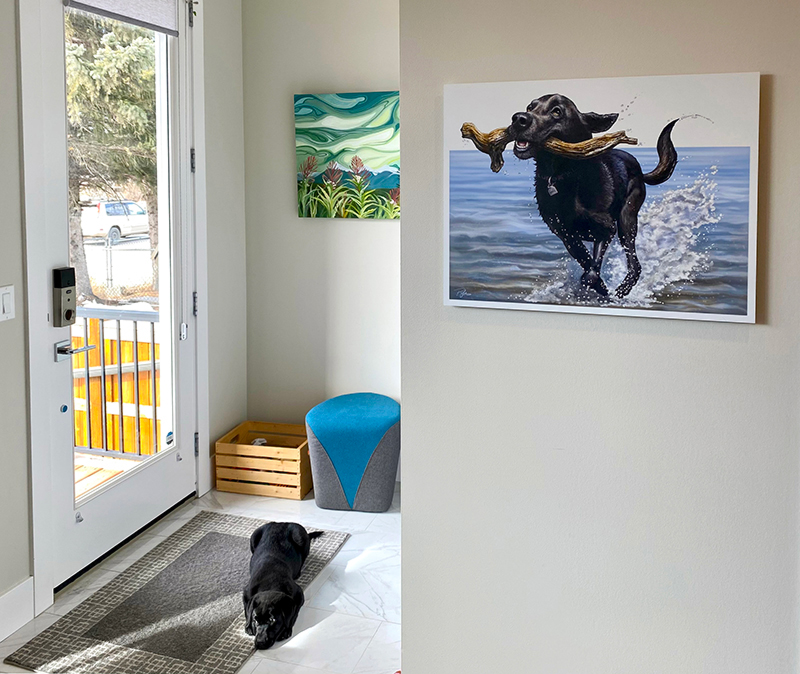 _____
_____
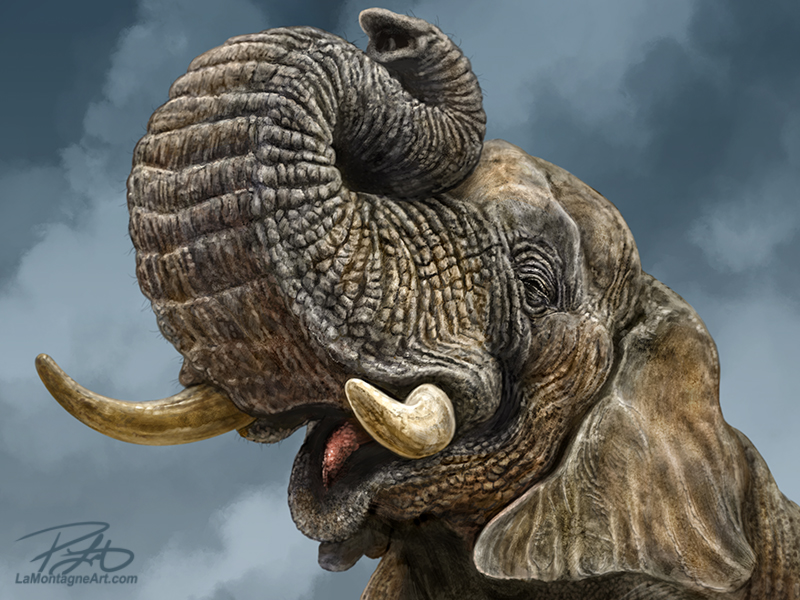 After more than two years of procrastinating, I finally finished this painting of an African elephant.
After more than two years of procrastinating, I finally finished this painting of an African elephant.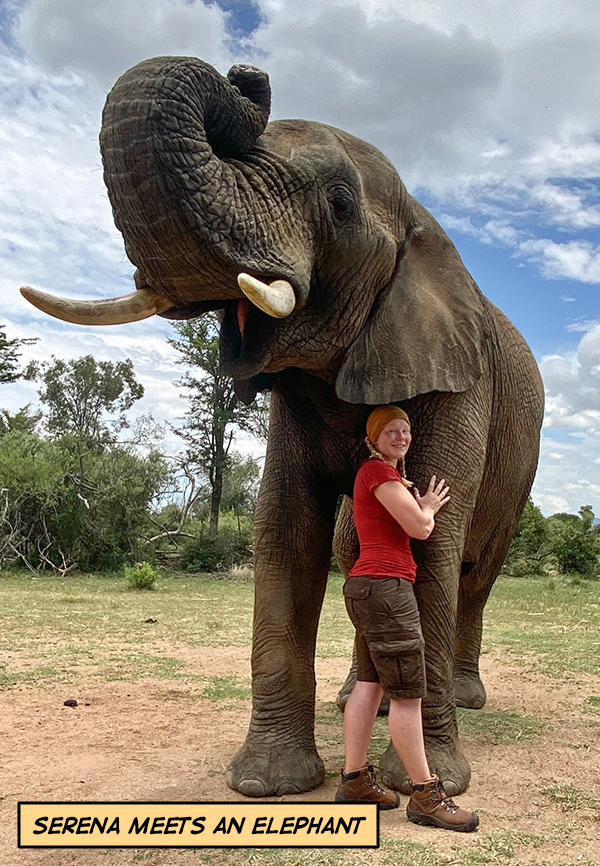
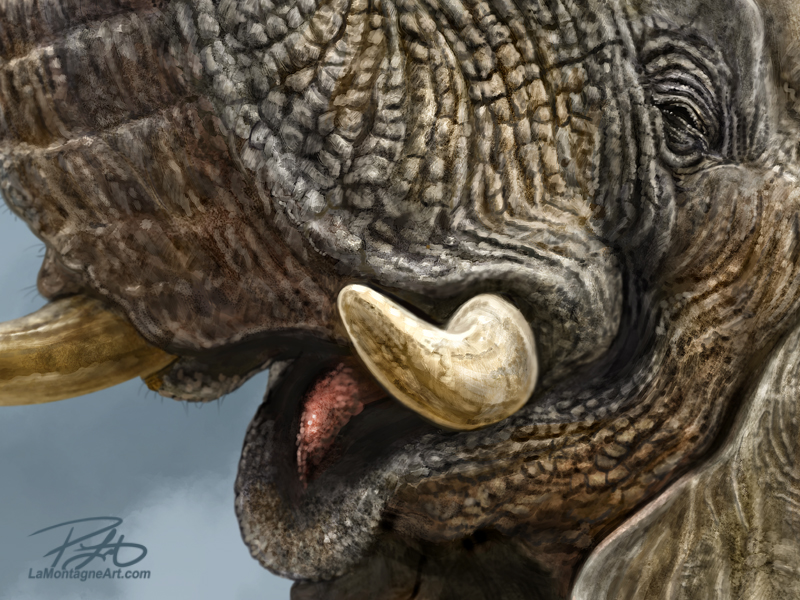 Secondly, the full-size four-day
Secondly, the full-size four-day 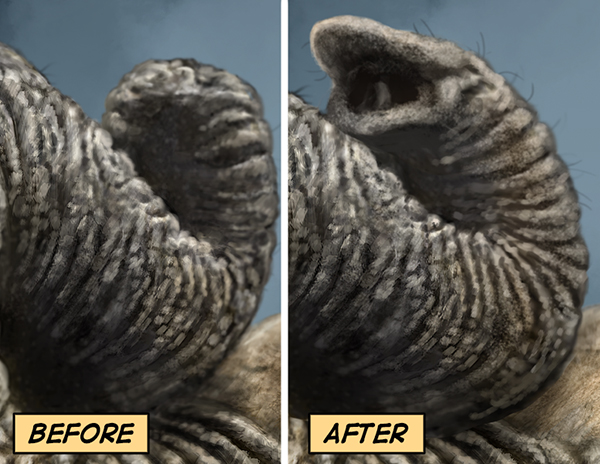 I sent a couple of changes to Serena, and she helped me get it right. She felt bad for having to tell me about it after I’d finished the painting, but I told her better than after I had bought dozens of prints, and coasters, trivets, magnets, and other licensed merchandise had gone into production.
I sent a couple of changes to Serena, and she helped me get it right. She felt bad for having to tell me about it after I’d finished the painting, but I told her better than after I had bought dozens of prints, and coasters, trivets, magnets, and other licensed merchandise had gone into production.
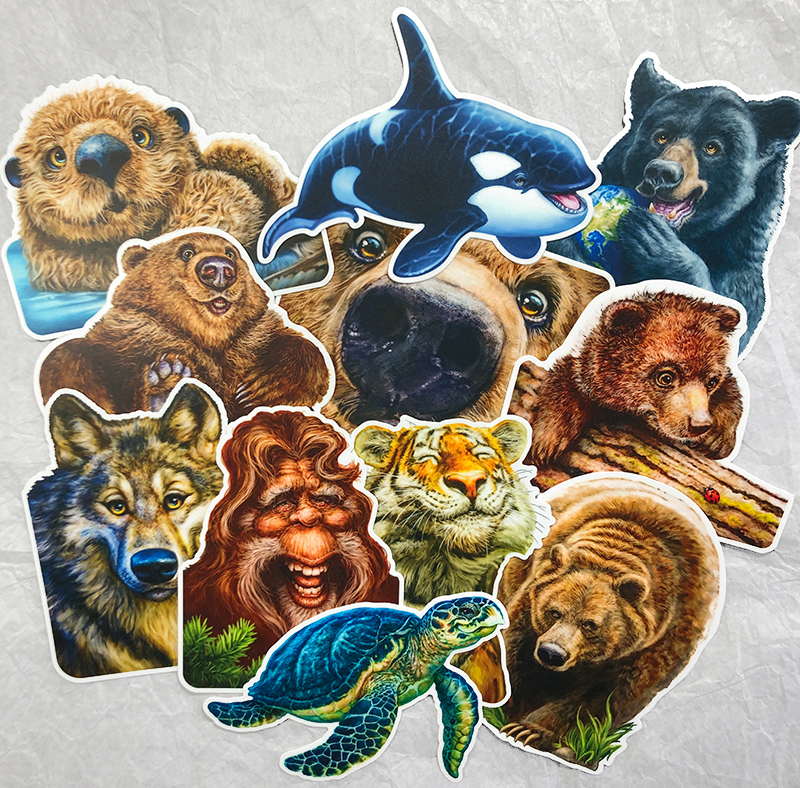
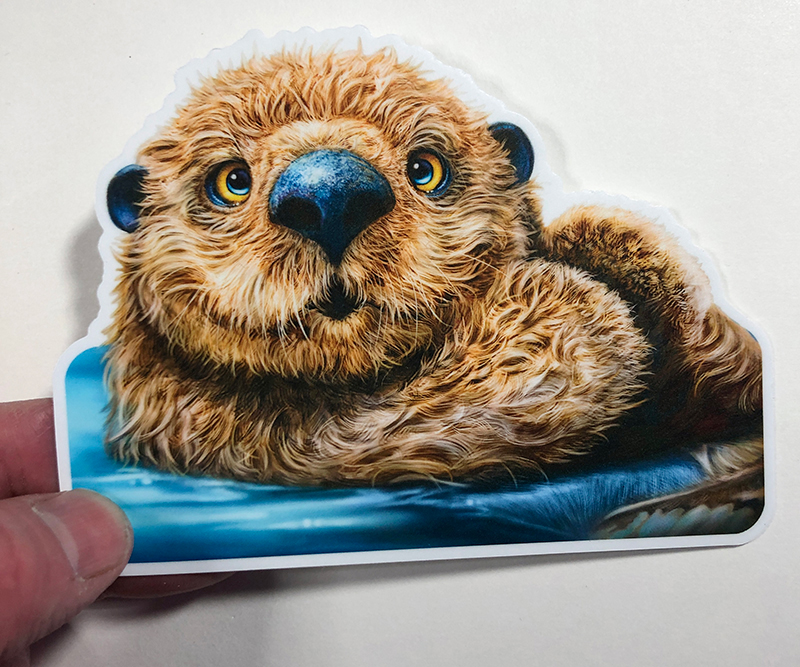 When I first moved to Canmore in 2001, I worked for a sign shop for a few years. Every place I’ve worked taught me skills I’ve applied to my own business. From that job, I learned design techniques, colour theory and how to create vector art. I still use vector paths and Bezier curves for clean ink lines in my editorial cartoons, a skill I learned at Canmore Sign Co.
When I first moved to Canmore in 2001, I worked for a sign shop for a few years. Every place I’ve worked taught me skills I’ve applied to my own business. From that job, I learned design techniques, colour theory and how to create vector art. I still use vector paths and Bezier curves for clean ink lines in my editorial cartoons, a skill I learned at Canmore Sign Co.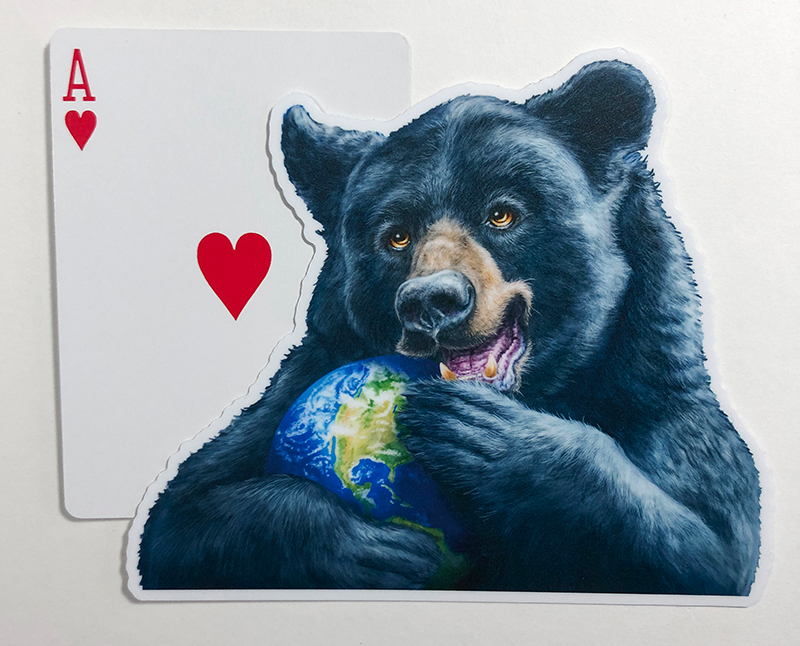 These are larger die-cut stickers than you will generally find, each around 4” X 5”. I didn’t want to shrink them down and lose the personality for which my whimsical critters are known. I also wanted people to have the option of putting them on vehicle windows, so they’re made from long-lasting, weather-resistant, high-quality vinyl. Finally, I chose a matte finish over glossy for better visibility in changing light.
These are larger die-cut stickers than you will generally find, each around 4” X 5”. I didn’t want to shrink them down and lose the personality for which my whimsical critters are known. I also wanted people to have the option of putting them on vehicle windows, so they’re made from long-lasting, weather-resistant, high-quality vinyl. Finally, I chose a matte finish over glossy for better visibility in changing light.
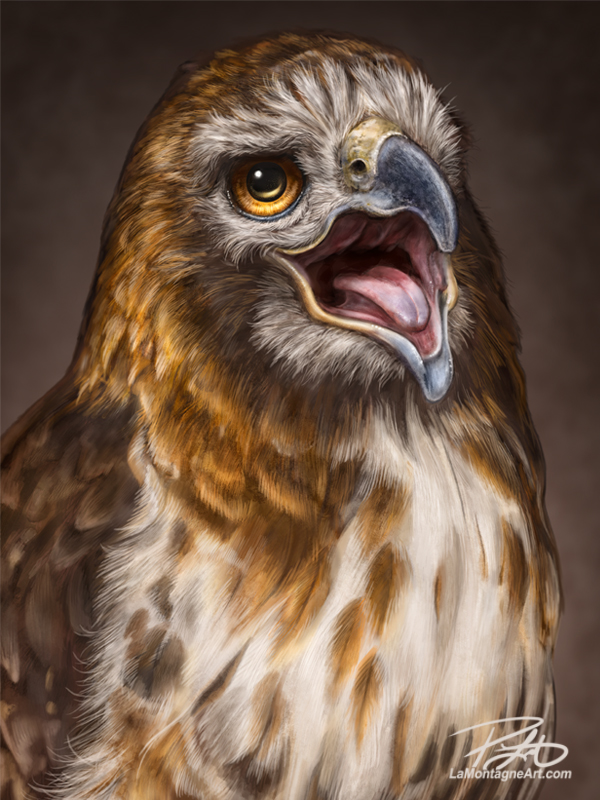 I’ve wanted to paint a Red-tailed Hawk for quite some time but could never seem to find the right reference. Though a common bird, my sightings in the wild have often been a comedy of bad timing.
I’ve wanted to paint a Red-tailed Hawk for quite some time but could never seem to find the right reference. Though a common bird, my sightings in the wild have often been a comedy of bad timing.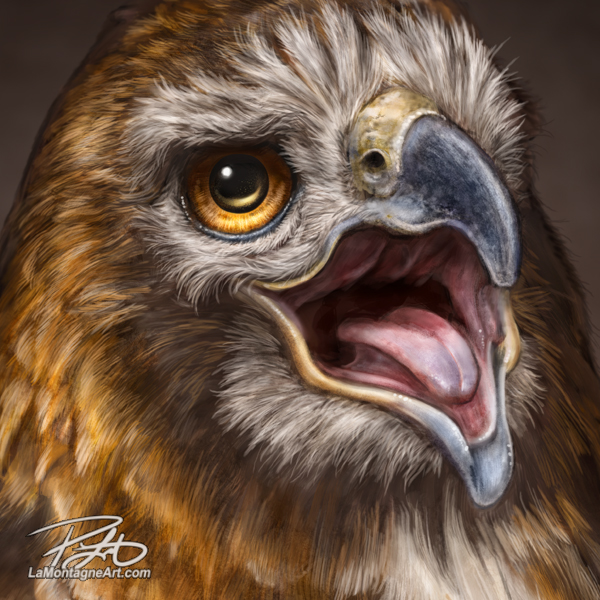

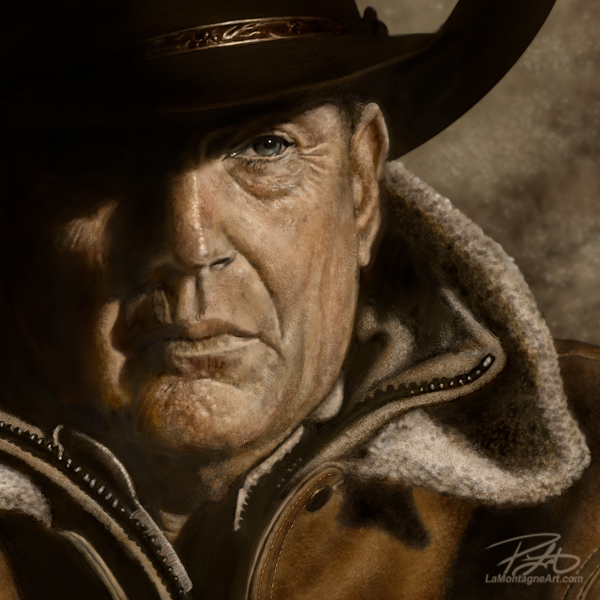
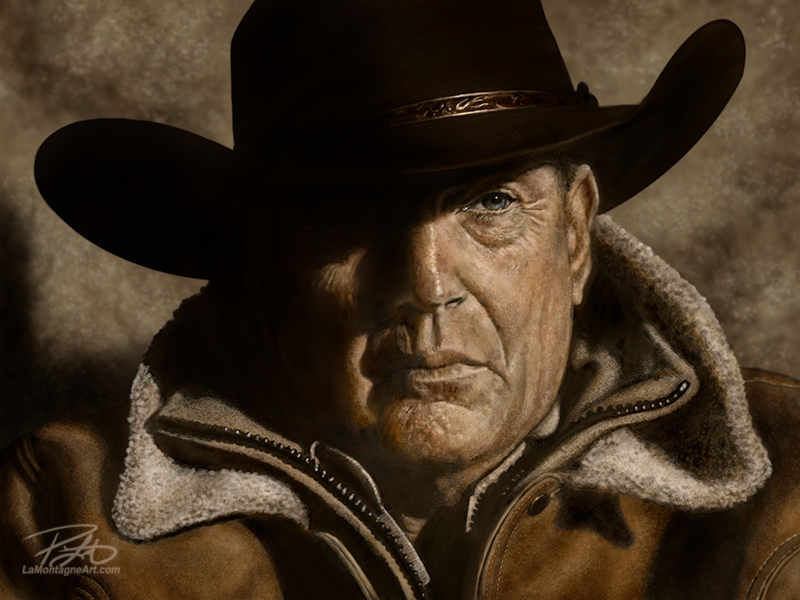 When I’m not drawing and distributing daily syndicated editorial cartoons, I’m painting whimsical wildlife portraits for prints and licensing. Add in the usual office administration, marketing, writing and everything else that goes along with self-employment, and that’s pretty much how I spend my days.
When I’m not drawing and distributing daily syndicated editorial cartoons, I’m painting whimsical wildlife portraits for prints and licensing. Add in the usual office administration, marketing, writing and everything else that goes along with self-employment, and that’s pretty much how I spend my days.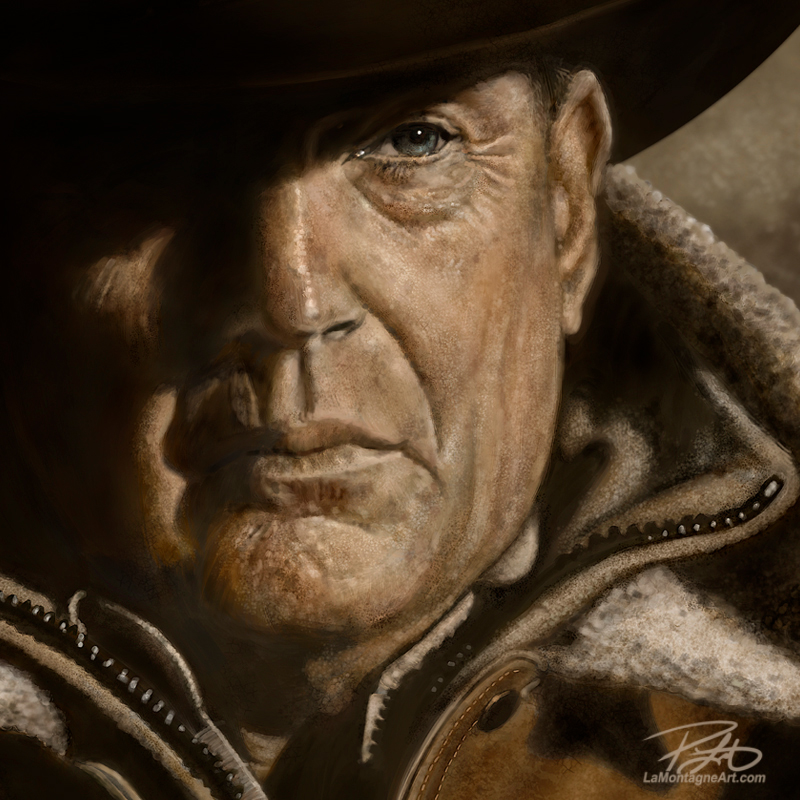 I started this painting in July, and I worked on it for a couple of hours here and there whenever I could find the time. I had planned to have it done before the fourth season began this month, but the paying gigs always take priority. So this past week, I put in the last ten or so hours over a few days. With no deadline, there was no reason to rush it, but I also didn’t want this painting to last for too much longer. As much as I loved the work, the best part is calling it done.
I started this painting in July, and I worked on it for a couple of hours here and there whenever I could find the time. I had planned to have it done before the fourth season began this month, but the paying gigs always take priority. So this past week, I put in the last ten or so hours over a few days. With no deadline, there was no reason to rush it, but I also didn’t want this painting to last for too much longer. As much as I loved the work, the best part is calling it done.
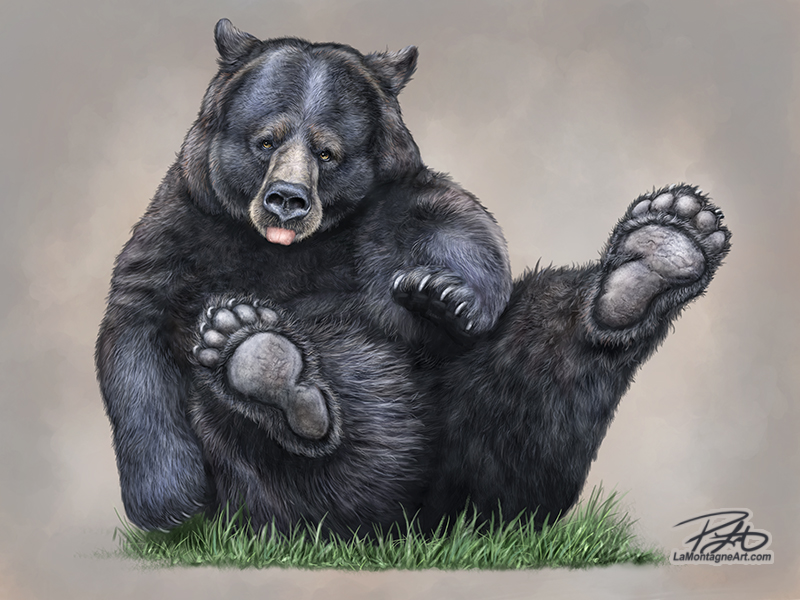
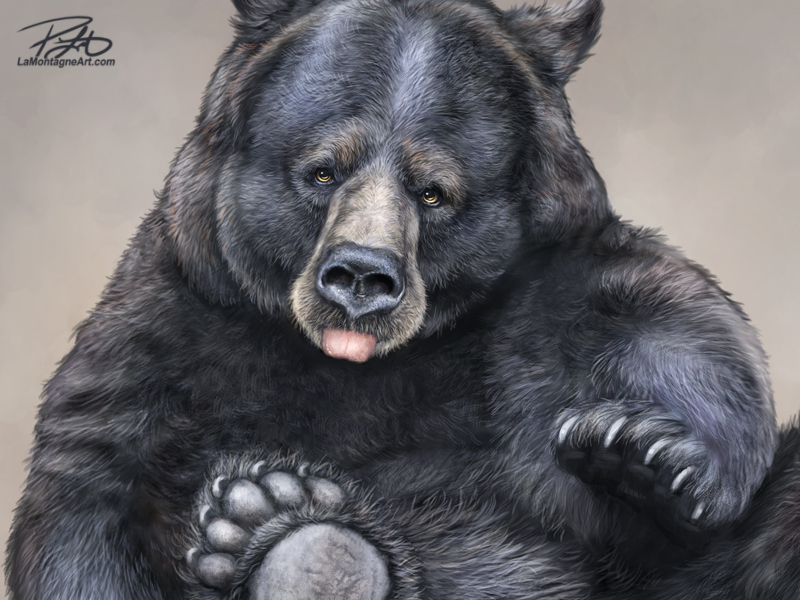
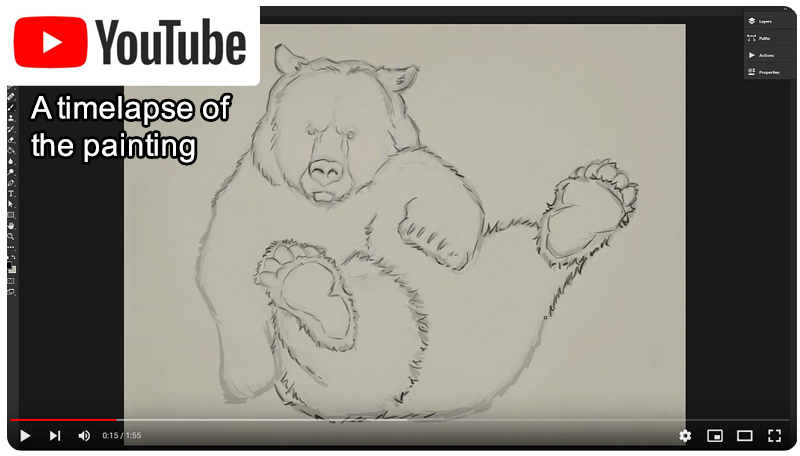
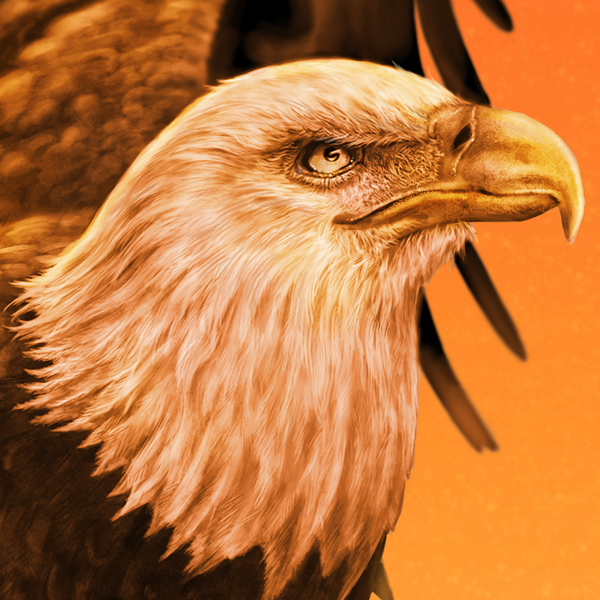
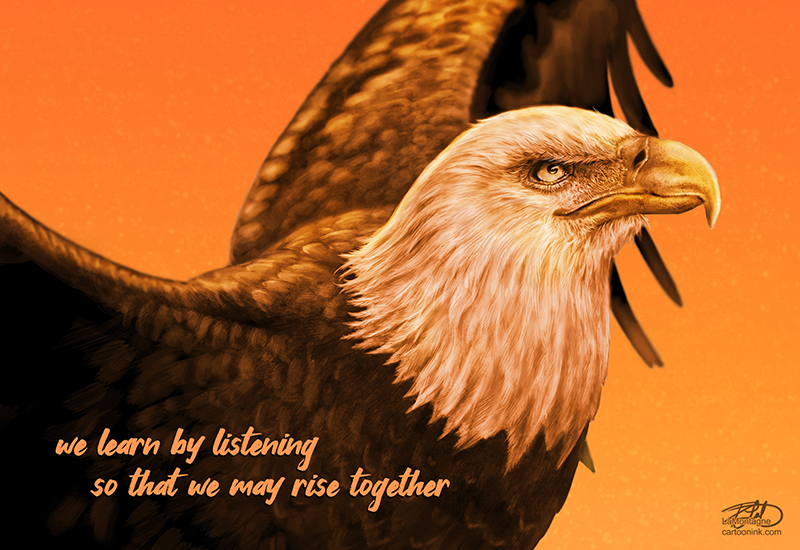 Early in this editorial cartoon profession, somebody once told me that editorial cartoons are supposed to make you laugh, think, and hopefully do both. I think it was Terry Mosher (Aislin).
Early in this editorial cartoon profession, somebody once told me that editorial cartoons are supposed to make you laugh, think, and hopefully do both. I think it was Terry Mosher (Aislin).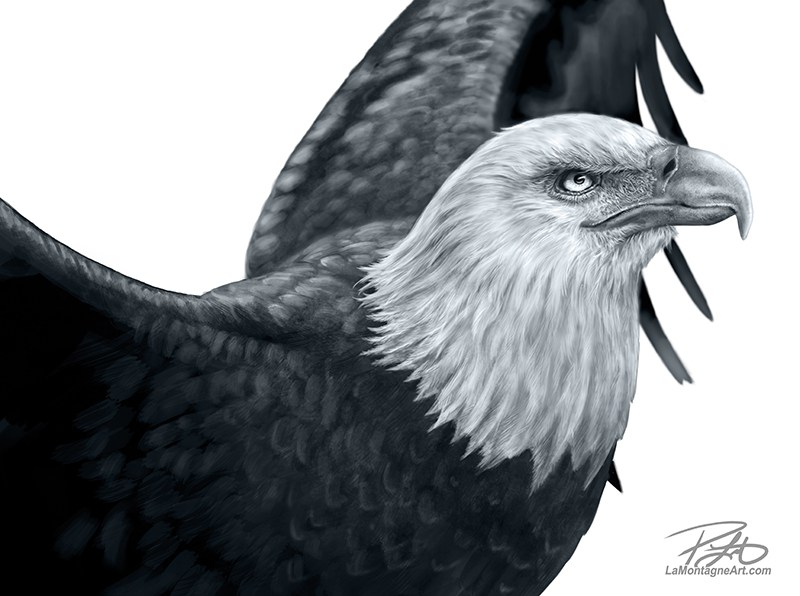 When I first created my animal art, I called them Totems but stopped the practice a few years ago.
When I first created my animal art, I called them Totems but stopped the practice a few years ago.